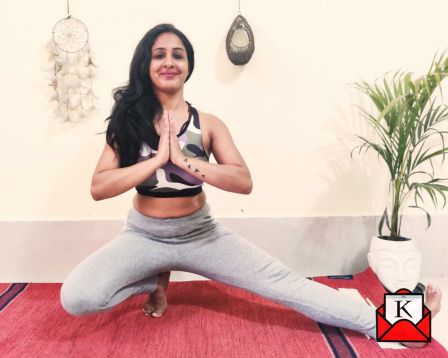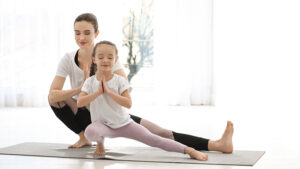Guest Blog-Yoga Practices To Prevent Covid


These days, at the top of everyone’s minds, is to guard ourselves against Covid, as we struggle with a second wave of the pandemic.
As the age-old saying goes, prevention is better than cure. Specific yogic practices, when followed daily, have proven to be highly effective in not just prevention but also post-illness recovery from the virus.
While this has been established by clinical studies, the need of the hour is widespread adoption of the same.
Why Yoga
While maintaining the norms of social distancing and frequent handwashing is a must, it might not be enough in the current scenario. Once we are exposed to the virus, the outcome is based on how robust our body’s defense mechanism is.
The better equipped the body is to cordon off the infection, the higher are the chances that we pass off the threat either without any symptoms, or have a smooth recovery from the illness. In some severe cases, even survival might be determined by how prepared our body’s resistance is.
It thus seems imperative to include in our daily routine, practices that prepare the body to maintain or restore its normal function despite any external threats.
The good news is we don’t have to venture very far as the solutions lie in our very own culture. The ancient Indian Yogic practices help achieve samatvam (homeostasis) at the mind and body level. Homeostasis refers to the ultimate balance of all body functions and is linked to a healthy, disease-free state.
Yoga asanas, pranayama, meditation, and relaxation techniques directly boost baseline immunity, through various mechanisms as detailed below. Yogic techniques also greatly improve lung capacity/pulmonary function and the health of respiratory muscles which is key as lung involvement is co-related with worse outcomes in Covid-19.
What practices work best for Covid?
Asanas:
Dhanurasana (bow pose) directly works on lymphatics in the intestine, which is the first line of protection against infection. Matsyasana (Fish pose) improves immunity by stimulating the thymus gland, which is the center of the immune system, and “trains” T cells to recognize pathogens. Uttansana/Hastapadasana (Forward bend) helps in chest expansion, increasing lung capacity and encouraging ventilation, especially in the lungs’ clavicular, which otherwise receive little fresh air. Trikonasana (Triangle pose) stretches the fascia around the lungs and helps in improved breathing. Also helpful in relieving tension.
Stress levels have been directly linked to immunity. When the body is under stress it releases cortisol which suppresses the protective mechanism of the body. Here comes the role of relaxation techniques.
Ananda Balasana (Happy baby pose) is great for stress relief and overall relaxation by opening up the hips. VipritKarni (legs up the wall pose) provides gentle relaxation by improving the circulation of blood in the brain. Savasana (corpse pose) helps in deep relaxation and has been proven to significantly lower stress.
Breathing techniques:
Kapalbhatipranayam helps to improve the strength of respiratory muscles and flush out impurities from the respiratory passages. Brahmari (bee breath) is highly effective in stress relief by directly acting on the parasympathetic nervous system. Deergha pranayama improves ventilation in the lungs and strengthens all 3 respiratory muscle groups – the clavicular, intercostal and diaphragmatic.
Others:
Meditation is a proven remedy for keeping stress levels under control. It can be guided if you are a beginner. Jal neti is an excellent kriya to flush out toxins from the upper respiratory tract.
These practices should best be learned from an expert, to avoid any side effects of injuries. Each practice has some medical conditions as contra-indications, hence it is advised to practice under supervision when you are starting.
Research has also established the role of yogic practices in recovering from post-Covid damage to lung function. My students have shown remarkable progress in their oxygen saturation and overall lung capacity with regular guided practice.
Given the current scenario, it would be wise to embrace these practices as part of our daily routine. Having said that, if you have fever, cough, and difficulty breathing, seek medical care early.
Author:
Dr. Charu Arora is a doctor specializing in cardiology with five years of practice in Singapore and India, Dr. Charu pursued her MBA from ISB, Hyderabad. After experiencing the holistic approach by yogic practices, she did her international certification for Yoga teacher from the world’s oldest yoga institute.
Dr. Charu believes in the immense healing power of yoga at a physical, mental, emotional, and spiritual level. After her chronic diseases were benefited by Yoga, she quit her corporate job and decided to impart this knowledge via her channel @yogaheals2020. She now provides customized solutions to patients struggling to manage chronic health issues with just medical therapy. She currently teaches students in the US, Australia, Middle East, and India through online live sessions on asanas, pranayama, and meditation. Dr. Charu also conducts regular sessions for corporates and other cohorts trying to spread awareness and dismiss common myths about yogic practices.
YogaHeals on Social media
Instagram: https://instagram.com/yogaheals2020?igshid=4aixuf53jdj0
Youtube: https://www.youtube.com/channel/UCptcxSFcsHSEO0NVet0_yMw?view_as =subscriber
Facebook: https://www.facebook.com/YogaHealswithDoctor/
Linkedin: https://www.linkedin.com/in/drcharuarora/
